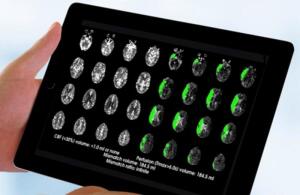by
Lauren Dubinsky, Senior Reporter | January 26, 2018

Some patients can be treated 16 hours
after onset of stroke
The adage "time equals brain" may not be true in some cases, according to new research published in the New England Journal of Medicine.
A brain imaging software known as RAPID is able to identify a greater amount of stroke patients who can receive therapy later than previously thought.
"These striking results will have an immediate impact and save people from lifelong disability or death," Dr. Walter Koroshetz, director of the National Institute of Neurological Disorders and Stroke, which funded the trial, said in a statement.



Ad Statistics
Times Displayed: 46601
Times Visited: 1410 MIT labs, experts in Multi-Vendor component level repair of: MRI Coils, RF amplifiers, Gradient Amplifiers Contrast Media Injectors. System repairs, sub-assembly repairs, component level repairs, refurbish/calibrate. info@mitlabsusa.com/+1 (305) 470-8013
The Endovascular Therapy Following Imaging Evaluation for the Ischemic Stroke (DEFUSE 3) trial was conducted across 38 centers in the U.S. The automated RAPID software was used to evaluate perfusion MR or CT scans.
The researchers then identified patients believed to have salvageable tissue up to 16 hours after the onset of stroke. The patients were randomly placed in a group that received endovascular thrombectomy plus standard medical therapy, or medical therapy alone.
Endovascular thrombectomy, which involves the surgical removal of the blockage, is currently approved for use up to six hours after the onset of symptoms, but the findings proved that it can be effective up to 16 hours afterward for certain patients.
More specifically, one out of three stroke patients who present with at-risk brain tissue on their scans do improve and some might even be saved from what would otherwise have been a serious brain injury, said Koroshetz.
Patients in the thrombectomy group had significantly better outcomes 90 days prior to treatment than those in the control group. Fourteen percent of the treated group died within that timeframe compared to 26 percent in the control group.
The findings from DEFUSE 3 add to two earlier DEFUSE studies as well as the DAWN trial, which used perfusion imaging technology to identify patients most likely to benefit from interventions such as thrombectomy.

